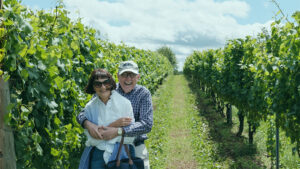Farm finance beyond the bank
Four years ago, the Financial Services Royal Commission exposed what many farmers already knew. Banks don’t get farming.
The Commission identified a list of problems.
Unqualified valuers
Local lending brokers who lacked the qualifications to accurately value farm properties.
Deliberate overvaluing
In some cases, farms were deliberately overvalued. Usually so that the bank could lend a farmer more money – and so that the local lender could earn more in commission.
Devaluations without notice
Banks used water rights as an excuse to devalue properties.
Altered loan terms
The banks then used these new valuations to alter the terms of a loan or even revoke it.
Forced foreclosures
Banks often aggressively foreclosed on struggling farms.
Cashed up investors moving in
This freed up more farms for cashed up Pitt Street and Collins Street farmers.
Farming is unpredictable. Banks don’t like unpredictable. The Commission’s findings came as no surprise to farmers, many of whom have been motivated to seek alternatives to bank finance. There are a couple that have gained traction.
Community supported agriculture
Simultaneously and independently, two farmers in Germany and the USA had the idea of supporting their farms by preselling their expected annual harvest to locals.
In this community supported agriculture (CSA) model, nearby families pay a farmer a few hundred dollars up front. The farmer uses this money to buy fertiliser and pay pickers. When the crops are ready, the families receive boxes of seasonal produce. Many farmers encourage families to visit the farm to collect their share of the harvest. This is why the model is sometimes called cropsharing.
The CSA model works well for farms close to substantial communities. Families report that they like being able to show their kids where their food is grown.
Collaborative farming
Some farmers have adopted the collaborative (or co-operative) farming model to cut operating costs. Farmers in proximity to each other might set up a company or a co-operative to jointly run multiple properties and share resources.
The model isn’t new. Dairy brand Norco is a co-operative owned by about 200 dairy farmers. They established the co-operative to share distribution and processing costs.
There is renewed interest in collaborative farming.
In 2009, increased production costs prompted neighbouring farmers in South Australia to adopt the collaborative principle.
The Gladigau and Schaefer family farms in Loxton were sold to a company owned by the families, Bulla Burra Farms. John Gladigau and Robin Schaefer realised that each had substantial sums invested in farm machinery that often sat idle. Both farmers grew the same crops on their properties. They sold some machinery to their new company and offloaded other equipment. They staggered planting so that harvests didn’t overlap. In some cases they harvested one field by day and another by night.
The decision has yielded an additional $100,000 in gross margin sales. For the first time, John and Robin are able to give themselves a salary and annual leave.
Sharefarming 2.0
Farm expenses and income rarely align. The substantial costs of farm management, crop management and even harvesting can occur many months before a farmer sees income from sales – especially for produce that requires processing.
A season wiped out by flood, fire or drought can mean a delay of 12 months or longer before a farmer sees income.
The Invest Inya Farmer app was created to do four things
- Bring farmers and consumers closer together
- Give every Australian a chance to support our farmers
- Give farmers a means to smooth out their income
- Give farmers extra income to recover from bad seasons
By partnering with IIF, farmers presell a portion on their year’s produce to individual investors. When the farmers decides that the produce is ready for sale, they share the profits with their investors.
IIF is a new model. Understandably, some farmers are cautious about this new model. Others get it straight away. The first farmer to come on board was NSW oyster grower Ewan McAsh. As Ewan wrote recently, “Pretty chuffed with the return on my oysters and even more chuffed with the $50K in cashflow received via IIF that helped our farm through a very challenging/wet summer season.”
If you’re a farmer and you’re interested in learning more about this new way to smooth out income, contact us at IIF.
Photo by Warren Wong on Unsplash




